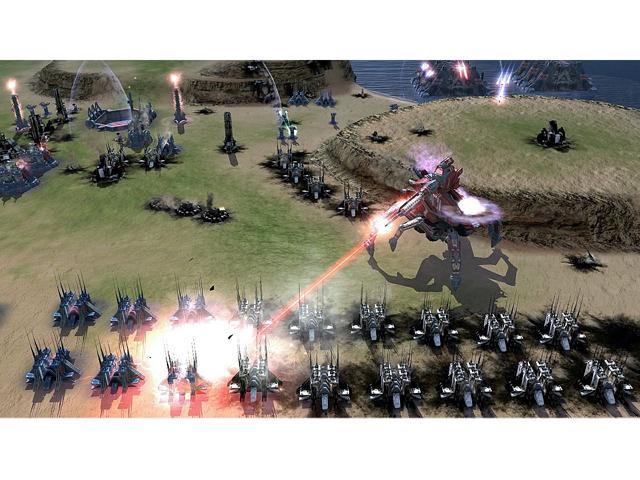

But without larger contextual cutscenes, everything feels like designed battlefields. Supreme Commander 2’s story focuses on three commanders from the differing factions and their personal struggles to see justice done in a galaxy at war. You’ll be doing your fair share of resource gathering by extracting mass and producing electricity, but you can only extract mass from specific, tactically-important sources. There are also tanks, robots, air units, naval units, hovercraft, experimental units, amphibious units, nuclear bombs, and experimental structures. All three factions start with an ACU, which is a building unit/mech that has a great defensive system but is often essential to keep intact in order to win any mission. This of course means that build-orders and micromanaging are extremely important in Supreme Commander 2, even more so than in games like Starcraft II: Wings of Liberty ( ) or Command & Conquer 3: Tiberium Wars ( ). You also don’t have just one build unit, but can train slews of engineers to build your armies and bases in no time. While other games will present you with a mini map of the entire battlefield, with Supreme Commander, you can zoom in and out and actually see the entire battlefield from a God-like vantage point or zoom in and see individual units attack and defend. That 200-unit cap you see with other sci-fi RTS? Pfft.
Supreme commander 2 game types series#
The Supreme Commander series still puts the “epic” in real-time strategy. Gas Powered Games has always been unafraid of scale. Now that I’ve spoken like a true bitter fan boy for the first part of this review, let me explain why Supreme Commander 2 is still an exceptional game. Any map with a body of water now makes little sense to play with the Illuminate. I also have no idea why the designers chose to eliminate the Illuminate’s (one of the three factions) entire naval force. Now since research points can be allocated to the tech tree of your choice, you can essentially “research rush” a specific force (land, sea, or air) and have an unbalanced, but tactically superior force in no time. While the game still looks great and on my iMac i7, never hiccupped even when engaged in full-scale battles with hundreds of units, it’s disappointing to see that the maps are generally smaller and the battle systems so genuinely altered.įor a series that is built on balance and flexibility, there are also some strange design choices that reduce your strategy options. Supreme Commander 2 cuts out many of the units from the first game, simplifies the research system, and even manages to reduce the scale all the while being less graphically complex.

So, yes, fans of the series will be disappointed. It’s important to understand the back-story on the game because traditionally speaking, this is a series of games meant for a very specific, dedicated real time strategy audience. Instead, we get 2010’s Supreme Commander 2 only months after it launched on Windows.

Disappointingly, Supreme Commander never made it to the Mac. When Total Annihilation’s Cavedog went under in 1999, Chris Taylor later went on to Gas Powered Games where he helped design 2007’s Supreme Commander, the spiritual successor to Total Annihilation. Simply put, Total Annihilation was a brilliant, underrated game that some critics actually preferred to Starcraft. The first real-time strategy game to offer 3D graphics, its scale and impressive array of units were beyond anything else at the time, and the numbers of strategies meant that you weren’t funneled to the same tactical choke points of Blizzard or Westwood’s franchises.
Supreme commander 2 game types mac#
Instead of being Taylor’s opus, Supreme Commander 2 (ported to the Mac by Virtual Gaming) is the kid-version of Supreme Commander.īut first, some back story: Chris Taylor was lead designer of Cavedog’s Total Annihilation, one of the most underrated games in history.

That’s the feeling you get when you play Taylor’s Supreme Commander 2, the sequel to a extremely epic, complex, and esoteric game that instead of becoming more ornate, instead takes a sharp turn towards approachability. Now imagine what it would be like if Yorke tried writing a sequel to Radiohead’s OK Computer as a tween-centered Jonas Brothers-esque pop album. Think of him as the Thom Yorke of gaming-you either love or hate his pretentious anti-pop approach to designing. Chris Taylor, formerly of Cavedog and now of Gas Powered Games, creates beautiful, complex, and epically scaled real time strategy games.


 0 kommentar(er)
0 kommentar(er)
